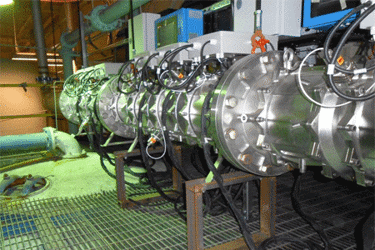Dechlorination Of RO Feed Water In Power Station

The Plant Bowen power station in Georgia faced a problem with microbial growth and fouling in their reverse osmosis (RO) system. Their current dechlorination process using sodium metabisulfite was not effectively preventing fouling. After an examination, sulfur-reducing bacteria were identified as the cause of the microbial growth. In an attempt to eliminate the bacteria's food source, the plant reduced the use of the dechlorination process, but their system design did not allow for a reduction in chlorine levels.
To address the issue, the facility decided to evaluate Atlantium's HOD UV technology as a non-chemical dechlorination method. Three HOD UV systems were installed in series in March 2014, and the technology successfully removed chlorine from the water. Data analysis showed that the permeate flow was higher compared to a new membrane, while the permeate quality remained similar to a new membrane.
Following the successful demonstration, Plant Bowen decided to incorporate the HOD UV system into their full-scale operations. Even after three years of operation, the RO membranes have been performing at the same level as new elements. The HOD UV technology has allowed the facility to reduce the use of sodium metabisulfite and decrease the frequency of micron filter replacement.
Get unlimited access to:
Enter your credentials below to log in. Not yet a member of Water Online? Subscribe today.
